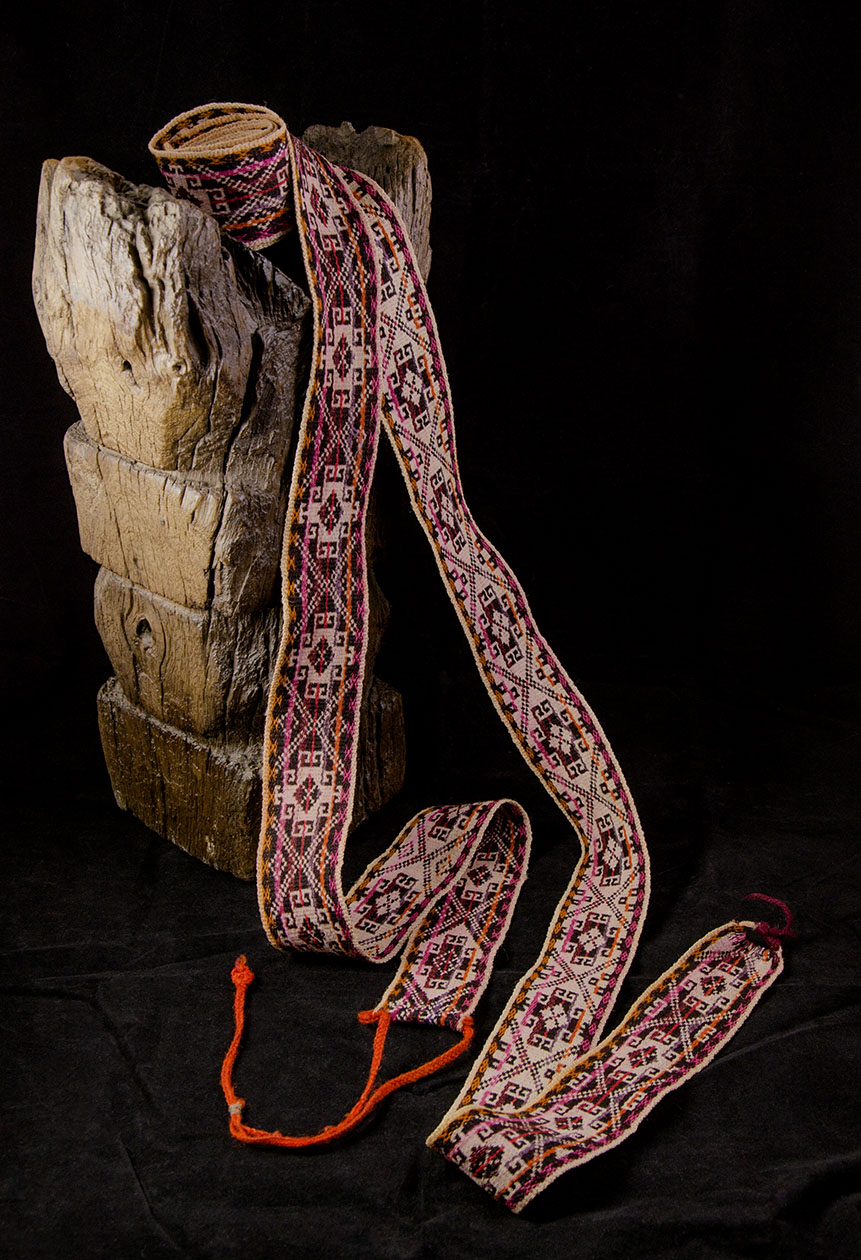BACK TO TOP
TEXTILES
Calcha belt.
Calcha belt. North of Chichas, Potosi. Bolivia. First half of the 20th century.
Piece woven on a stake loom with sheep's wool from artisanal spinning with a spindle, dyed with cochineal grana and other natural dyes. The technique used is the double-sided warp face. In its design -a faithful reflection of the cultural intersection between America and Europe- it recurrently shows a clear baroque influence and a stylized American cross with fretwork, with a central floral design characteristic of the Quechua culture. Each craftswoman usually imprints a “signature” detail on her work, and in this strip we can see the last of the baroque crosses with the colors inverted compared to all the others, a sign of excellence that distinguishes it. Measures. Length: 340 cm. Width: 5cm.
The fame of its textiles contrasts with the small population of this town, about 3,500 residents, a number that amazes given the high quality of the pieces that have come out of its looms.
Formerly the calchas were part of the chicha nation, and as Waldemar Espinoza said in his Charcas Memorial, “the chichas were warriors, because despite having dangerous borders with the chiriguanos, they were never subdued by them. The Incas sent them to the valleys of Churumata to conquer the Cordillera and for this service they had the privilege of being called "chichas orejones". They dressed in the wool of rams from the land and made their own clothes, weapons and feathers.” [1]
Note:
1. Teresa Gisbert, Silvia Arce and Martha Cajías, Textile Art and Andean World, Plural Editors, La Paz, Bolivia, 2006, p. 287.
Are you interested in selling some works?
Send us an email briefly indicating
which works you intend to put on sale, and we will respond. click here
Subscribe to our newsletter to be updated.
Check our Newsletters